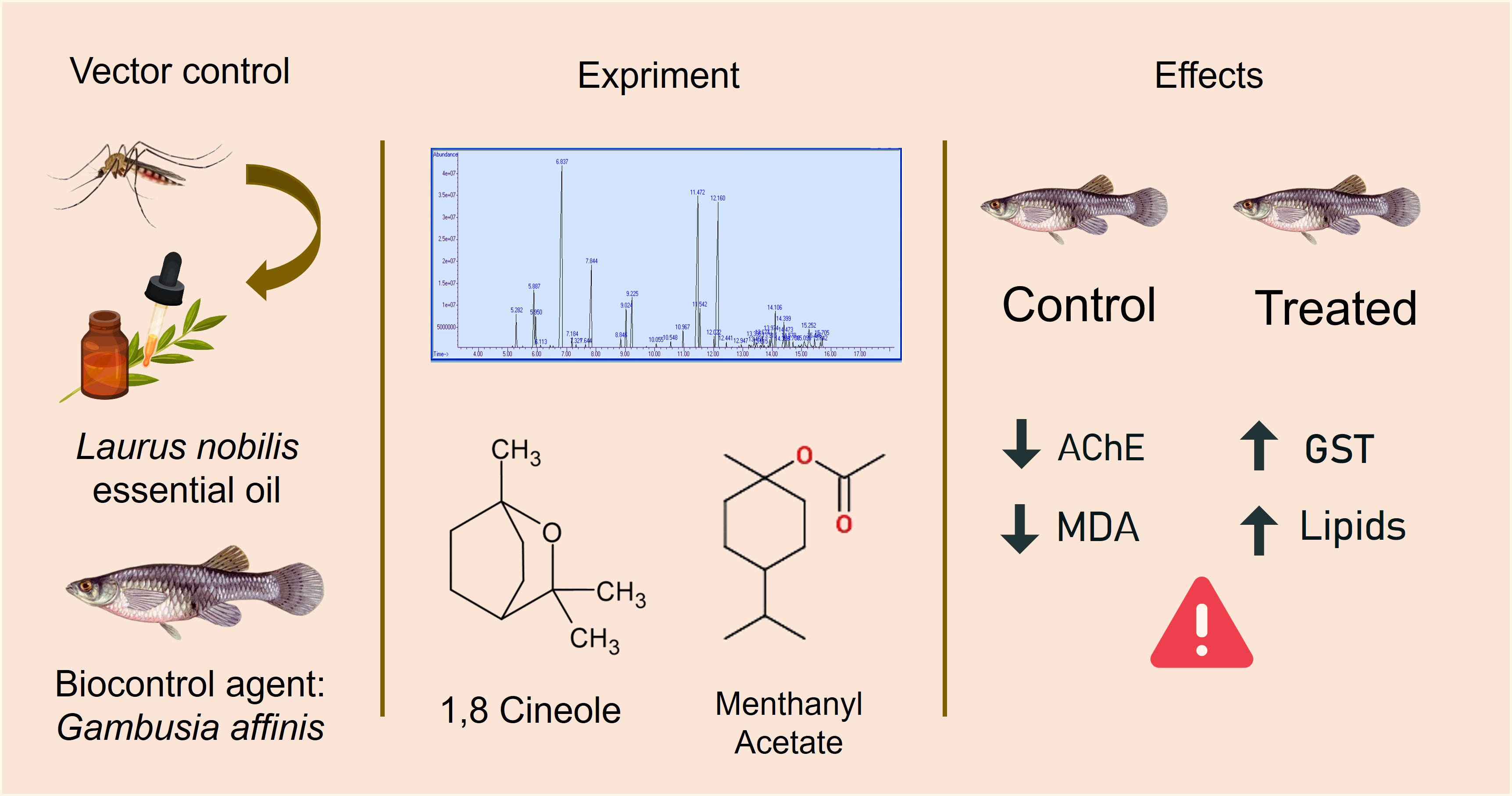
The efficacy of essential oils against mosquito larvae has been highlighted, being used as an alternative to chemical insecticides in a vector control program. However, few works demonstrate the side effects of these substances on non-target organisms like Gambusia affinis (Baird and Girard, 1853) (Actinopterygii: Poeciliidae) considered as a reference biological control agent. This study focuses on the potential side effects of an essential oil (EO) of Laurus nobilis L. (1753) on juveniles of G. affinis. The mosquitofish were collected at El Karma (in Annaba province). First, we analyzed the biochemical composition of the essential oil using gas chromatography-spectrometry (GC/MS). Then, acute toxicity tests (48 hours) were carried out, with the application of different concentrations of the EO added to the fish-rearing water of juveniles of G. affinis. Also, different morphometric parameters have been measured after acute exposure to the EO. Lastly, the acetylcholinesterase (AChE) and the glutathione-S-transferase (GST) activities, malondialdehyde (MDA) rate and total lipid levels were measured in control and treated series. GC/MS analysis demonstrated the different biochemical constituents of the EO, with 1,8-cineole (21.9%) as the main compound followed by menthanyl acetate (17.15%) and methyl eugenol (17.11%). In addition, the morphometric measurements indicated that the treated series was characterized by lower weights compared to the control one. Regarding environmental biomarkers, the current results showed that this EO caused a significant decrease in AChE and an increase in GST activities. Moreover, it generated a slight decrease in MDA rates, with an increase in total lipid contents. Regardless, juveniles of this non-target organism are sensitive to the high concentrations tested compared with those obtained against some mosquito species, hence the need to take the necessary measures when using this EO as an alternative to chemical pesticides.
Total file downloads: 12